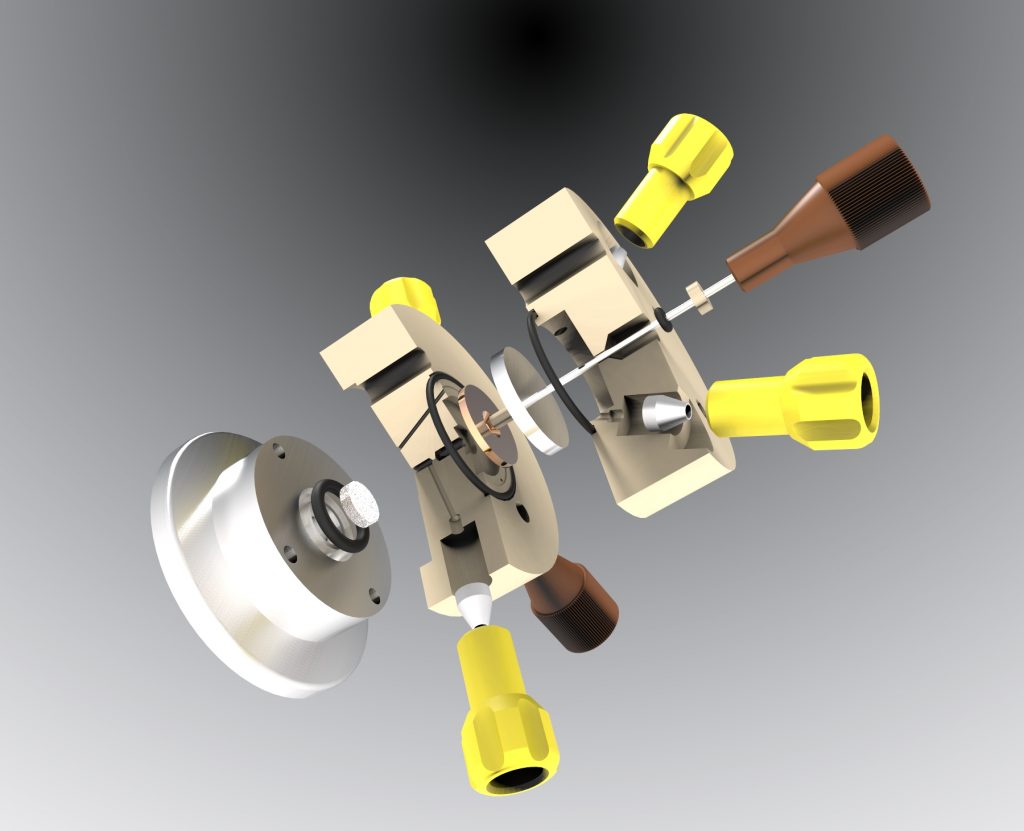An electrochemical half-cell essentially comprises one half of the structure of a typical galvanic cell, containing a single conductive electrode in an electrolytic suspension. Half-cell experimentation is a fundamental process in materials research, catalysis research, and electrochemical reaction studies. However, conventional half-cell technology offers limited insights into the reactions occurring at an electrode in situ.

A differential electrochemical mass spectrometer (DEMS) eliminates the ambiguity of electrochemical reaction processes by subjecting half-cell experimentation to mass spectrometric analysis. This provides a quantitative determination of the unique gaseous or volatile products of electrochemical reactions, including reactants and reaction intermediates. Differential electrochemical mass spectrometers achieve this by correlating the relevant mass ion currents of the electrolyte flow to the faradaic current of the electrode.
The differential measurement of these two currents provides reliable, mass-resolved observation of various electrochemical reaction processes in a typical half-cell architecture. Achieving this requires three key components: a half-cell; a nanoporous membrane; and a quadrupole mass spectrometer.
Outlining the Components of a DEMS System
Hiden Analytical’s proprietary differential electrochemical mass spectrometer system is the HPR-40 DEMS: a compact bench-top system with a standard mass range of 200 amu. It is highly user-configurable, with a range of electrochemical half-cells that house integrated membrane inlets to the mass spectrometer unit. The analyser itself is the established HPR-40 dissolved species analyser (DSA), which boasts sub-parts per billion (ppb) detection levels and rapid response mass scanning of multiple species in situ.
The electrochemical half-cells are engineered for optimal interfacing with the HPR-40 DSA high-performance mass spectrometer. This provides optimal transport of reactants of interest from the half-cell to the quadrupole mass analyser. Each of these cells is typically equipped with a replaceable nanoporous membrane.
Read More: DEMS for Differential Electrochemical Mass Spectrometry
The type A DEMS cell is optimised for materials and catalyst studies with up to four ports for additional electrodes. Type B DEMS cells meanwhile are suited for electrochemical reaction studies with a counter electrode compartment and an ion conducting membrane, alongside the working electrode. Each of these architectures provides sensitive detection from 100% to 100 ppb, providing quantitative insights into a variety of electrochemical reactions.
Differential Electrochemical Mass Spectrometry with Hiden Analytical
Hiden Analytical is a leading authority in mass spectrometry, with over 35 years’ experience in the design, development, and manufacture of cutting-edge analytical equipment. Our differential electromechanical mass spectrometers offer new insights into the electrochemical behaviour of half-cells, providing ultra-precise, quantitative data to a broad range of academic fields.
If you would like any more information about our differential electrochemical mass spectrometers, please do not hesitate to contact us.

